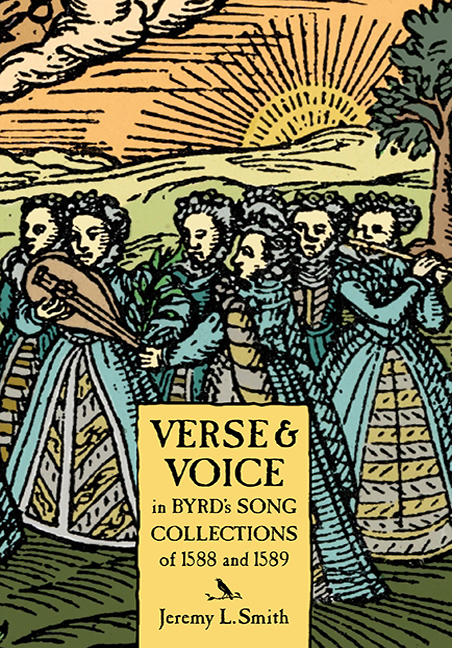Book contents
- Frontmatter
- Contents
- List of Figures
- List of Music Examples
- Preface and Acknowledgements
- Editorial Conventions
- Introduction
- CHAPTER 1 Psalmes
- CHAPTER 2 Sonets & Pastoralls, I
- CHAPTER 3 Sonets & Pastoralls, II
- CHAPTER 4 Sonets & Pastoralls, III
- CHAPTER 5 Songs of sadnes and pietie
- CHAPTER 6 Songs of Three Parts
- CHAPTER 7 Songs of Four Parts
- CHAPTER 8 Songs of Five Parts
- CHAPTER 9 Songs of Six Parts
- Conclusion
- Select Bibliography
- Index
- Studies in Medieval and Renaissance Music
CHAPTER 2 - Sonets & Pastoralls, I
Published online by Cambridge University Press: 05 July 2016
- Frontmatter
- Contents
- List of Figures
- List of Music Examples
- Preface and Acknowledgements
- Editorial Conventions
- Introduction
- CHAPTER 1 Psalmes
- CHAPTER 2 Sonets & Pastoralls, I
- CHAPTER 3 Sonets & Pastoralls, II
- CHAPTER 4 Sonets & Pastoralls, III
- CHAPTER 5 Songs of sadnes and pietie
- CHAPTER 6 Songs of Three Parts
- CHAPTER 7 Songs of Four Parts
- CHAPTER 8 Songs of Five Parts
- CHAPTER 9 Songs of Six Parts
- Conclusion
- Select Bibliography
- Index
- Studies in Medieval and Renaissance Music
Summary
THE middle section of Byrd's Psalmes, Sonets, & songs of sadnes and pietie, with sixteen songs (BE 12: 11–26), is the longest of the set. On the title page Byrd labeled the works “sonets” (BE 12, p. xli) but at the opening and ending of the section he added the word “pastoralls” (BE 12: 11) in describing them again. Neither term was used very precisely at the time, but the latter proves to be slightly more helpful, as only two songs in the section are sonnets (BE 12: 18 and BE 12: 20) whereas more, although by no means all, are pastoral in theme. (The last song of the entire set, BE 12: 35, is also laid out as sonnet, although in blank verse.) As with the psalms of the opening section, most of the poems in this middle part are multi-stanza verses that Byrd set in strophic fashion. The fourteeners common to all of the first ten works, however, rarely reappear in the middle part, at least in their standard guise (the short BE 12: 21 is an exception), and the poems of this section boast a much greater formal variety overall, although most are sixtains with an ababcc rhyme scheme. Byrd also turned away at this point from the psalms’ sacred theme. He returned to religion, however, in the last section of the book, which he styled “songs of sadnes and pietie” (BE 12: 27–35). Within this closing group of nine songs, Byrd placed above the last two a subhead describing them as funeral songs for Philip Sidney, listed as “that honorable Gent” (BE 12: 34).
While the title and headings become increasingly informative as the book progresses, this hardly betrays any sense that Byrd is developing a consistent theme or narrative. Evidence for that is only to be found within the works themselves. Edmund Spenser described his monumental Faerie Queene as a book designed “to fashion a gentle man or noble person in vertuous and gentle discipline.”
- Type
- Chapter
- Information
- Publisher: Boydell & BrewerPrint publication year: 2016

